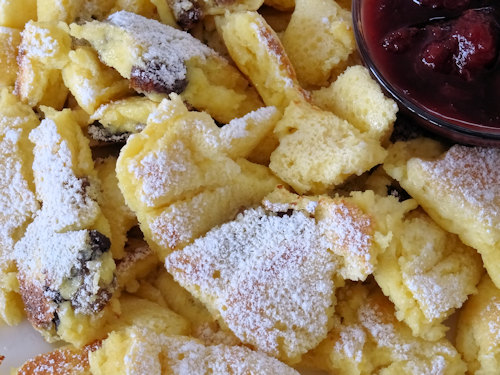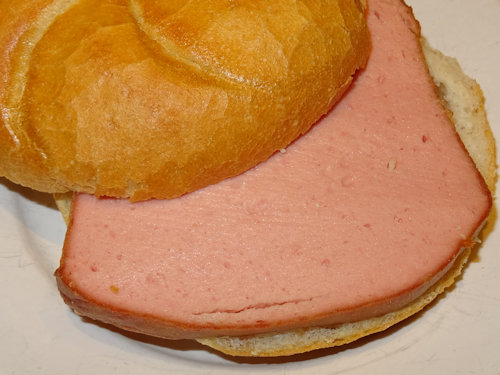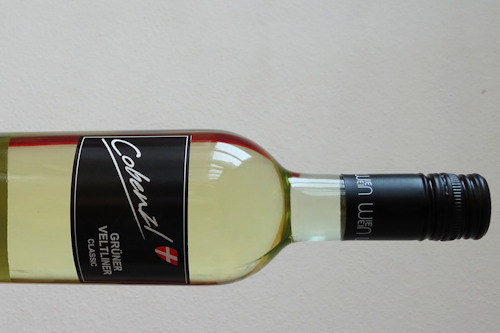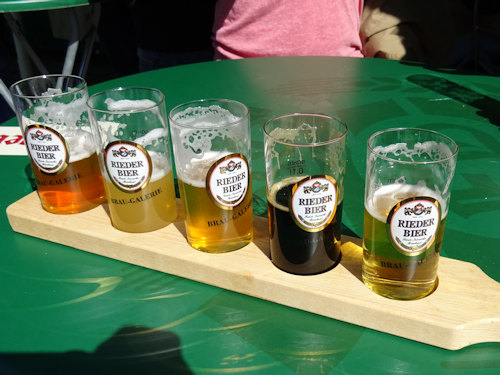
The Habsburg’s capital city adopted a range of delights from the imperial regions and vanquished enemies, then threw in its own creations to produce what we know as traditional Viennese food and beverages.
So, if you want to go native, what should you eat and drink in Vienna?
- Book a food or drink experience* in Vienna
- See also:
Jump to:
- Main courses
- Desserts
- Snacks
- Drinks (coffee, wine, beer)
- Seasonal Christmas fare
- Festivals & fairs
Main courses

(Tafelspitz: one of many dishes with an Imperial connection)
You might have heard of Wiener Schnitzel pork cutlets, which are the bread and butter of the Viennese meat-eating diet. But traditional local fare also includes other delights. For example:
- Tafelspitz: a boiled beef dish and a favourite of Emperor Franz Joseph
- Knödel: various dumpling-like items you find in your soup, as a side with hearty meat dishes, or in a sweet version on the dessert menu
- The ubiquitous sausages: sold at booths around the town and at any sporting event. And the queen of the sausages is the Käsekrainer
The Viennese have invented a whole new vocabulary to go with sausage eating. The words involve rather graphic metaphors for these staples of local life, and most never actually get used at all (other than to entertain visitors).
Try my guide to Viennese main courses for more dish suggestions. It covers such wonders as Krautfleckerln, Eierschwammerl and Zwiebelrostbraten. And, if we’re talking breakfast, then you also need to know about Austrian bread.
Finally, if (like me) meat’s not your thing, here some tips on vegetarian Vienna.
Desserts

(Kaiserschmarren)
Traditional Viennese food tends to focus on the final moments of the meal: the desserts. For example, try Kaiserschmarrn: shredded pancake with plum compote (another favourite of Franz Joseph). Or sweet dumplings like Marillenknödel.
For more alternatives, take a peek at my guide to Viennese pastries and desserts.
Cakes form the bedrock of these desserts (and coffee breaks. And breakfast. And all cultural life, frankly). So here’s my handy guide to cakes in Vienna. Three of the more local creations include:
- The Sachertorte: the legendary chocolate cake invented at the house of Prince Metternich
- The Gugelhupf: a marbled cake with a distinctive ring-shape. Yet another dish associated with the Emperor
- The Imperial Torte: another chocolate cake and another connection to Franz Joseph, whose visit to the opening of a hotel prompted the torte’s creation
Snacks

(A Leberkäse roll in a rather unflattering photo, Though, to be honest, no photo is going to make anyone believe the Leberkäse is the height of culinary sophistication)
People born in Vienna arrive in the world with a sweet tooth. Which is one reason for the ongoing popularity of Manner Schnitten: a traditional wafer snack with hazelnut cream and the erstwhile star of a Terminator film.
And, of course, we have various varieties of Christmas biscuit, which I address later in this article.
For something a little different, though, consider:
- Langos: a huge fried disc of potato dough. Often consumed in vast quantities at just about any organised outdoor event, along with sausages
- Leberkäse: a meatloaf-like substance usually eaten hot in a roll. Like many Viennese “delicacies”, it tastes better than it sounds
Traditional drinks
Let’s begin the beverage section with the number one drink…
Coffee

(Café Sperl: coffee house and location for period dramas)
If Vienna had a middle name, it would be coffee (and cake). The city brims with cafés serving a variety of coffee specialties.
An hour or two spent in one of the more historical coffee houses is perhaps the most iconic and authentic Viennese experience you can have. But if you find yourself staring at the menu and wondering what a Kleiner Brauner or Einspanner could possibly be, then you need a Vienna coffee glossary.
Your coffee traditionally comes with a glass of water. This is usually tap water rather than mineral water; the stuff that comes out of our taps is actually just as good, thanks to water pipes that stretch down to Vienna all the way from the Alps.
Wine

(Vienna is home to several local wineries. Cobenzl winery even belongs to the city)
Oh, yes. Wine.
Thanks to some geological luck associated with the Danube river and hill formations, Vienna supports a significant regional wine industry with vineyards, wine taverns, and a centuries-old tradition of wine making.
The city even has its own state-owned and now fully-organic winery, which you can visit on its open day.
Beer

(A staple of outdoor events)
When not drinking coffee or tap water (or wine), your average Viennese is perhaps consuming large quantities of beer. Only the Czechs drink more than the Austrians.
The local city brewery is Ottakringer, whose industrial premises also host many events (including its own summer beer festival).
BTW, this is how you say cheers.
Christmas food and drink

(The seasonal markets serve their Christmas punch in collectible mugs)
Learn all about traditional Christmas meals and food on the main Christmas in Vienna page. But the longest queues at the Christmas markets surround the stands selling Christmas punch in infinite varieties, which you might accompany with roast chestnuts.
And visit any Viennese home during the advent period and you won’t escape without first consuming an array of Lebkuchen (a little like gingerbread), Stollen (a kind of dried fruit bread loaf), home-baked Christmas biscuits and/or Spekulatius biscuits.
Festivals of food and drink
Finally, if you’d like to take a deeper dive into specialist Austrian cuisine, try these festivals that usually return each year to Vienna:
Selected combined festivals

(The Genuss festival is like a culinary tour of Austria)
- Styrian Spring: promoting the food, drink, and culture of the province of Steiermark
- Burgenland Kultinarium: another province drops into Vienna to showcase its wines, beers, and regional produce, all accompanied by live music
- Waldviertelpur: food and drink from the lowland Waldviertel region, known particularly for its poppy seed breads and pastries
- Veganmania: open-air vegan festival with (street) food a dominant theme
- Vegan Planet: indoor fair for the vegan lifestyle with food and drink playing a big role
- mit alles: culinary festival showcasing finer products from the hands of smaller Austrian producers
- European Street Food festival: dozens of food trucks serve both Austrian and international cuisine
- Genusswelten: gourmet delights and specialties
- Genuss festival: small-scale farms and regional producers from around the country gather in the Stadtpark to showcase their high-quality wares
Selected drink festivals

(A selection sampled at the Vienna Beer Festival)
- Vienna Coffee Festival: pays homage to the the city’s favourite beverage
- Craft Beer Festival: twice-yearly event that reflects the growth of microbreweries and the craft beer movement
- Ottakringer Bierfest: Vienna’s main brewery puts on a long summer event, with food & music also available (and even, sometimes, guest beers from other breweries)
- Vienna Beer Festival: the Am Hof square fills with Austrian breweries large and small offering their wares
- Vienna Gin Festival: the clue is in the name
- VieVinum: international wine festival held in the prestigious Hofburg congress centre
- Liquid Market Cocktail Festival: a tribute to the bartender’s art
- Vienna Rum & Gin Festivals: held jointly across the premises of Ottakringer brewery